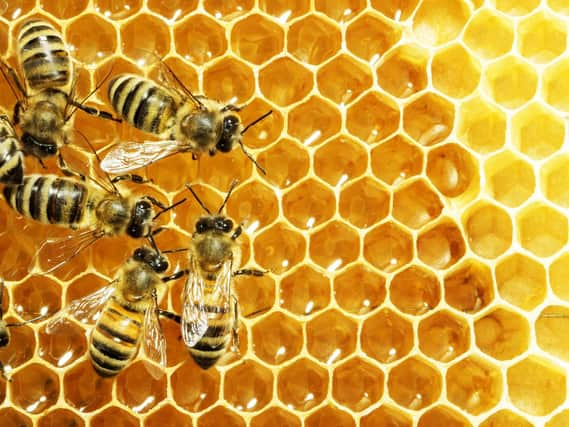Spring can be season where things "change rapidly" for beekeepers with the threat of swarming


For a beekeeper Spring is a season when things can change very rapidly. You start out worrying about whether your bees will survive the winter and almost as soon as you are confident that they have done that then you have to start worrying about whether they are going to swarm.
Most of the time beekeeping is pretty easy. When it comes down to it all a bee hive really consists of is a box with an opening and some hanging files stored inside it. The fact that the files have thousands of tiny animals making their living on them complicates things a touch, but it is relatively easy to open the hive, pull out each of the frames in turn and work out what is going on.
Advertisement
Hide AdAdvertisement
Hide AdUsually when you hold a frame of bees up to the light it is possible to see a mixture of different activities happening. The first thing I usually look for is whether the bees have been storing honey and pollen.
Each of the famously hexagonal little wax cells that cover the frames can be filled with nectar that has been concentrated and reworked to make honey and then capped off with a little more wax to ensure that it doesn’t trickle out. In good times we can find frame after frame of stored honey and be confident that no matter how bad the weather turns the girls will have plenty to eat.
It is usually necessary to look rather harder to find cells that have been filled with pollen. This is the protein that young bees particularly need. Often it is fed to them within minutes of it arriving but, when there is a surplus, they may store some. It is then possible to spot a few areas where bright red, yellow, orange or even purple pollen has been packed in tightly.
Once satisfied that there is enough food I then usually start looking to see if there are plenty of new bees being born and raised. In summer an individual bee can live as short a time as eight weeks so there needs to be a constant supply of new bees.
Advertisement
Hide AdAdvertisement
Hide AdUsually in the warmest and safest parts of the middle of the hive it is possible to find the brood bees. With excellent eye-sight, or a good magnifying glass, cells can be spotted that have tiny little white eggs in them. Other cells will have beautiful white little insect grubs that are much easier to see, and then there will be whole areas of the frame where cells have been capped over with nice clean biscuit coloured wax. This is where grubs are slowly being transformed into fully grown bees.
In a weak hive there will only be a few bees being raised but if the weather is right and plenty of food starts coming in then the queen can begin laying very rapidly and within a few short days there can suddenly be a lot more frames of young bees.
As soon as that happens there is a risk that the colony decides that times are so good that they need to take advantage of the opportunity to split themselves in two and try to reproduce the whole hive. They then start producing cells that have potential new queens inside them and once that happens it signifies that the workers will start to pressure the old queen to leave.
The moment there is a serious risk of bees starting to prepare to swarm then it is best to take action. Prevention being better than cure means that most bee keepers will try and artificially control the swarming instinct by splitting the hive before the bees get round to trying to do that for themselves.
Advertisement
Hide AdAdvertisement
Hide AdWith care it is possible to set up a second hive and move the queen into this hive with just enough supporting workers and just enough brood to ensure that she can keep on laying new eggs that can be raised to adulthood. The old hive stays behind with a new queen emerging and plenty of worker bees and stores of food to support her.
If all goes well then the new queen is able to fly out and get mated and start laying her own eggs in time for her offspring to emerge and ensure that the happy beekeeper has two healthy hives instead of one.
Do this too early and you produce two really weak hives that struggle to survive. Do it too late and the risk is a swarm of bees spontaneously emerges and you lose half your hive and annoy the neighbours rather badly.
So Spring is a time for quick thinking, good judgement, experience and skill. Unfortunately, those are attributes that I am still struggling to acquire!